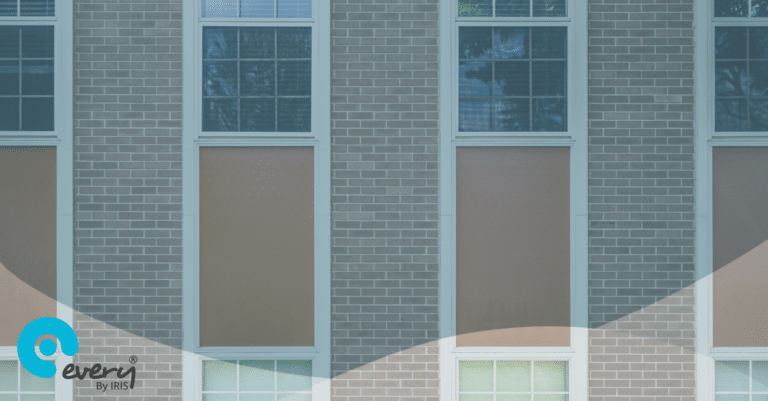Our facilities experts have put together some guidance to help school business managers and site managers carry out an annual routine maintenance inspection of school premises.
Why are maintenance inspections important?
Well-maintained school premises are critical to the delivery of an excellent learning and teaching environment; planned building maintenance maximises cost savings and provides better value for money; deferring building maintenance can cost time and money.
Professional advice and support will sometimes be necessary for planning maintenance, nevertheless school personnel can assist in the process of prevention and early detection of building defects. The annual routine maintenance inspection forms part of the process of identifying and prioritising maintenance requirements.
The main reasons for undertaking maintenance inspections:
- Make sure structure is safe and fit for purpose
- Identify sources of trouble and misuse to prevent serious deterioration and failure
- Increase the service life of building elements and components – similar to having the annual servicing of your car to ensure the engine performs well and lasts
Regular inspection is the basis of good building maintenance practice. It will help you to identify necessary repairs at an early stage and to help minimise the risk of major and costly problems occurring. Diagnosing and then addressing the causes of building defects – as opposed to treating surface symptoms – is a key to a successful maintenance regime. For example there are scores of possible reasons why cracks appear in walls: ground subsidence; the growth or removal of nearby trees; lack of movement joints (note the vertical joints in long brick walls) to allow for expansion and contraction of building materials.
Good practice suggests that the school should be subject to a thorough visual inspection by chartered building surveyors and building services engineers every five years who then prepare a maintenance plan and programme of work. The majority of maintenance and repair expenditure arising from these surveys should be devoted to planned as opposed to reactive maintenance.
In the present fiscal climate when we strive for cost reductions and value for money, then it is arguably even more important that an annual maintenance inspection is carried out to effectively target where money should be spent.
Planning the inspection
Follow the checklist below in preparing to carry out a building inspection:
- What equipment will you need to arrange safe access to all parts of the premises, eg ladders, boom lifts, platform lifts, access towers, scissor lift platforms, truck mounted platforms (cherry pickers). You might want to consider the benefits of having a small builder in attendance to provide access and supply tools and equipment. This also means that if work needs
- When will you carry out the inspection, eg springtime after the harsh winter weather; school hours; weather conditions
- What will it involve and how long should it take, eg taking notes and photographs. As a rule of thumb a 12,000m2 secondary school should take two days.
- What hazards or risks are present? Consider the safety of yourself and of others, eg lone working, high structures, hazardous materials and substances, eg asbestos; bird droppings
- What to wear – gloves, respirator or face mask, safety helmet, high visibility vest, ear defenders, eye protection and boots
- Will temporary lighting be required?
- Have you considered live and unsecured services, eg cables for satellite dishes; cables for connecting smoke detectors above suspended ceilings?
- Have you considered hidden traps, ducts and openings?
- What equipment will you need? eg camera and video camera, clipboard and pens, binoculars, penknife, hand mirrors, probes, moisture meter, plumb bob, measuring tapes, hand held laser measuring device, spirit level
- What checklists and plans will you use, and how will you record what you see.
Carrying out the inspection
Our facilities experts have made the following recommendations:
- Decide in advance in which order you will inspect buildings and estimate times for each so you don’t run out of time.
- When inspecting each building, start with the roof, continue with examining each external wall in turn, then proceed to the interior.
- The key parts you should include in your survey are:
- Roof level – the covering, flashings, fascias and soffits, rainwater drainage, chimney stacks and pots
- External walls – brick/masonry walls, cladding, rendering, damp proof courses, windows and doors, rainwater goods, canopies
- Below ground drainage and services – inspection chambers and rodding eyes
- Internal room finishes – ceiling, wall and floor finishes, skirtings and architraves, windows and doors
- Stairs – treads and risers, balustrading and handrails
- Roof spaces – roof structure and covering, ventilation, insulation
- Mechanical and electrical services – plumbing, electrics, heating, cooling, water supply and storage, gas, fire safety systems, security installations, lightening protection
- Kitchens and toilets – fixtures and fittings
- Plant and boiler rooms
Identifying common building defects
Look out for:
- Leaking flat roofs and defective flashings
- Gutters and rainwater leaks
- Slipped and missing roof tiles
- Leaking drains
- Joint seals and sealants in external walls
- Cracking to walls
- Lack of ventilation and condensation
- Plumbing leaks
- Decorations and finishes
What happens after the inspection?
You need to set aside sufficient time after the inspection to make good use of the information collected and to draw up an action list.
List what maintenance and repair works the inspection has prompted.
When prioritising and costing maintenance work, surveyors distinguish between unavoidable work, essential work and desirable work.
Every users should set up a new ‘issue’ for each piece of maintenance work required and assign it to the relevant staff member (i.e. site manager) or contractor. Every users can also use the Request a Quote Tool to quickly get quotes for work.
For urgent issues, or larger-scale work, or planned maintenance issues (eg you decide after the inspection that within the next two years you will need to replace flat roofing) you should consider who needs to be involved in any discussions to authorise budget, make alternative arrangements for teaching, eg site manager, governors, building users.
Make sure that the information is retained. In particular photographic evidence or key measurements will be essential when carrying out the next annual inspection so you can judge rates of deterioration. Every users can store all notes and images on the system for future action / audit trails / evidence of condition. Of course images can be forwarded to contractors to assist in quoting / preparing for attendance.
List what further information is required.
Note what lessons have been learned for next time in terms of time taken, equipment needed and risk assessments. Again, Every users can log all of this under the Activity so that the process of preparing for the next inspection if quick and efficient.
Schedule a date for the next annual inspection. Every users can set this up as an Activity on the system, so they will get automatic reminders and be able to view it on their horizon of activities.
Or if you want to see how the Every business management software works, book a free demo below.
| Thank you for Signing Up |




